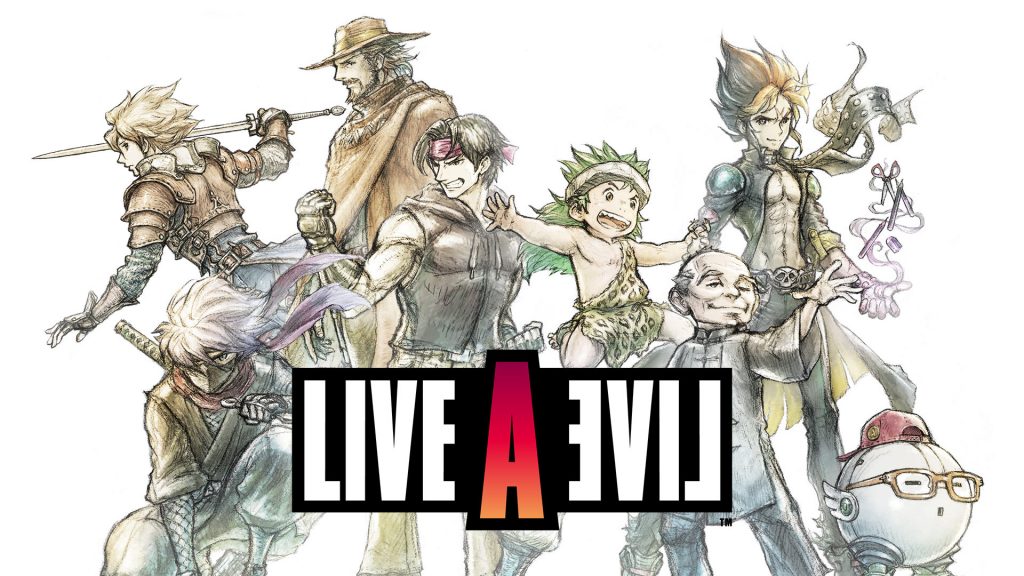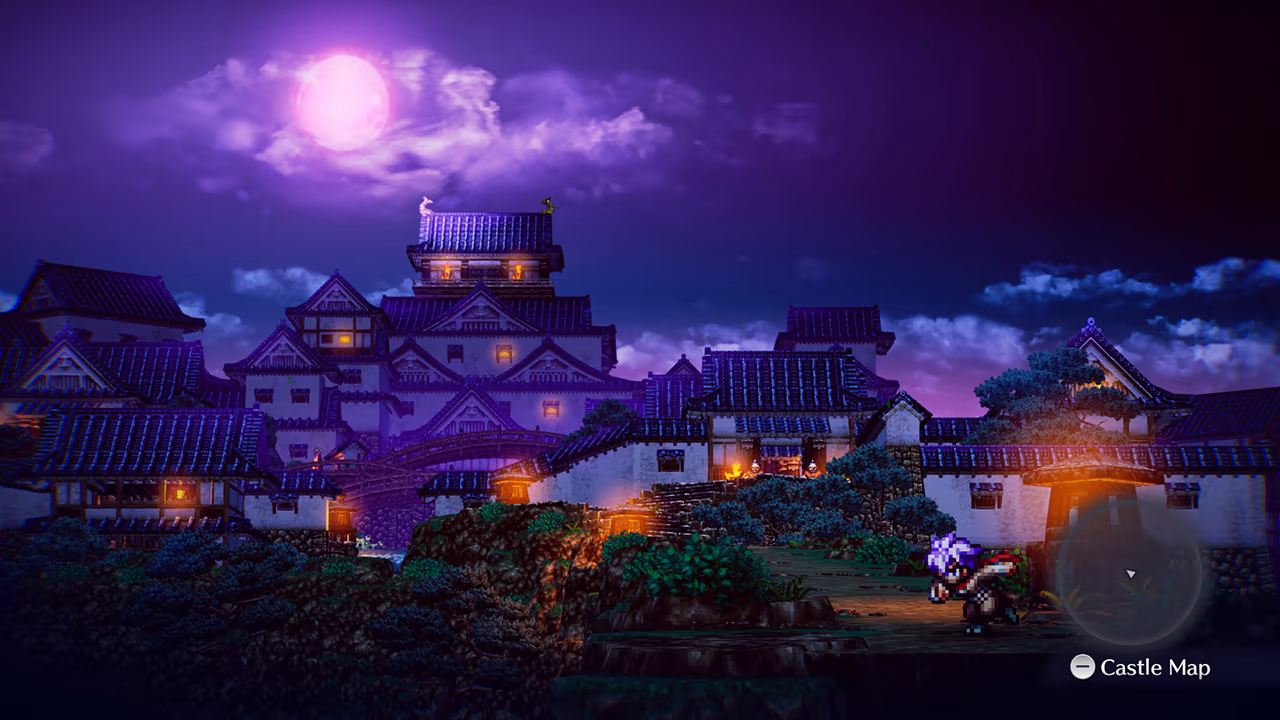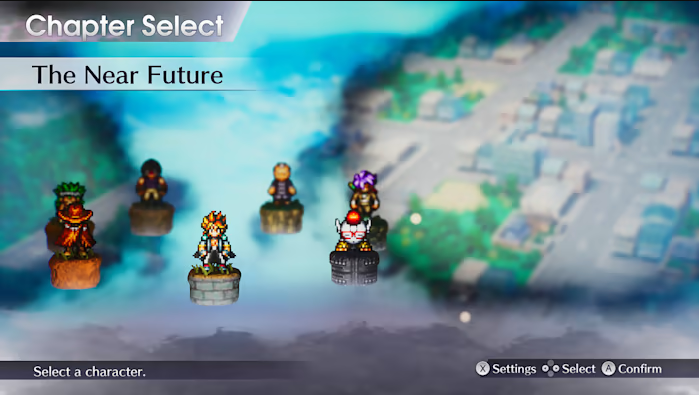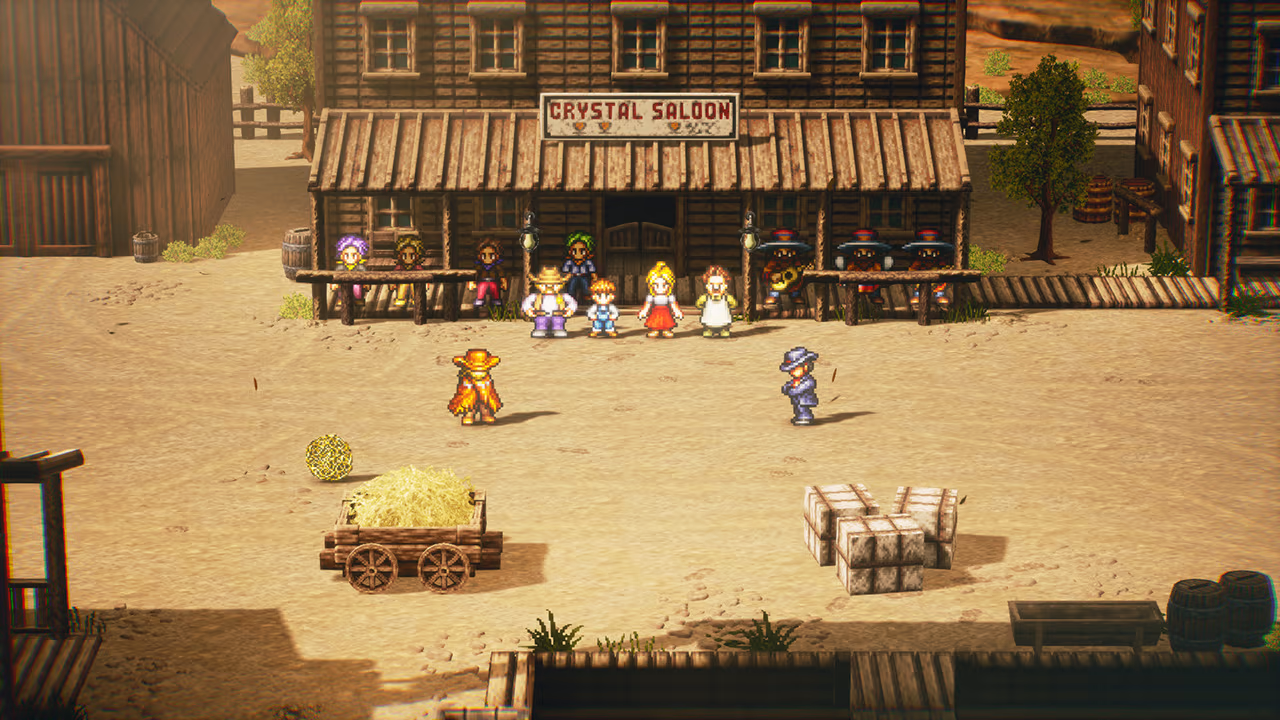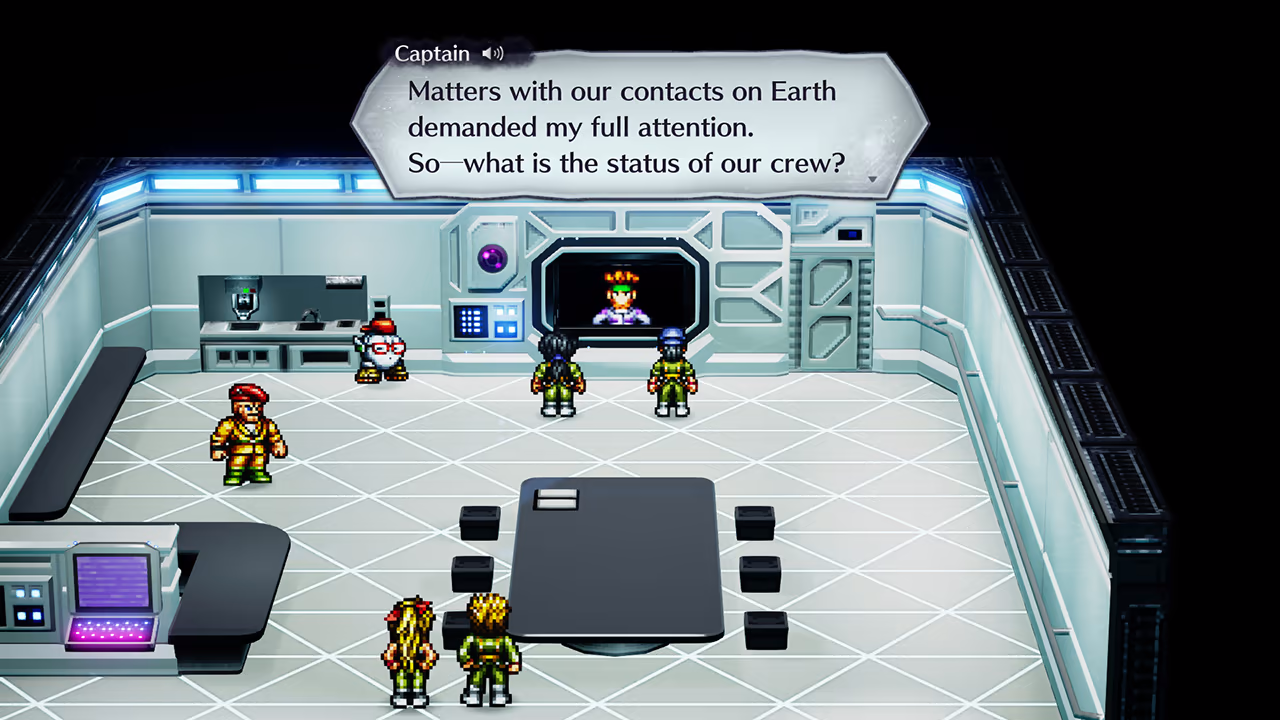Live A Live is the sort of game whose mere existence is cause for celebration. It’s a remake of a Super Nintendo JRPG that was originally released in Japan (and only Japan) in 1994. The director, Takashi Tokita, went on to make another little project you may have heard of: Chrono Trigger. Releasing in English for the first time, Live A Live for the Nintendo Switch is a mixed bag of nostalgic, subversive adventures reimagined within the stunning HD-2D engine.
The game is split into seven chapters each with its own protagonist and each set in an entirely different time and place. You’ll play as a goofy caveman kid (cavechild?) in the Prehistory chapter, a lone gunslinger in the Wild West, and a young man who can read minds in the Near Future, among others.
Each chapter has unique music, plot, and gameplay mechanics to uncover which keeps things fresh throughout the 20 or so hours it will take you to complete the game. The chapters also vary greatly in length. Some you can wrap up in half an hour, while others will take closer to two full hours. Some focus almost entirely on combat, others on the story, but for the most part it’s a healthy balance of both.
The way this game toys with established JRPG tropes is surprising, even after nearly 30 years since the original release. In the Wild West chapter, for example, you must help a small town fend off a bandit attack. You do this by searching the town for weapons and materials to make traps, but you only have until daybreak to get prepared. You can arm the townsfolk with the weapons you’ve found, or get them to build traps, but picking the right person for the right job is key.
In the Edo Japan chapter, you play as a shinobi who must infiltrate a castle. You can choose to engage in combat, slaughtering all who cross your path or avoid combat altogether with a no-kill run. The latter is a lot trickier but offers unique rewards whereas the former plays more like a traditional JRPG.
Not every chapter is a winner, for example, the Prehistory chapter is a definite low point. This chapter doesn’t feature any traditional dialogue, instead being a sort of pantomime where the characters grunt at each other. It relies a lot (a lot) on fart jokes and slapstick which becomes tiring very quickly. Compared to the rest of the game, this chapter is lacking in almost every way.
However… this is kind of what makes this game special. It’s part of the unique experience that Live A Live offers to have certain chapters blow you away and others fail to impress. Playing as each character, weighing them up, comparing them, and ranking them, it’s fun even if it wasn’t a deliberate function of the game.
In the chapters that actually feature dialogue, the writing is decent, and contributes a lot to the feeling of being in a different time and place. The voice acting, not technically possible in the original version, adds a whole other layer of depth to the script. What were once little pixels expressing themselves through simple animations, sound effects and text become far more fleshed-out characters thanks to the wonderful vocal performances.
The narrative of each chapter is purely self-contained, and while things do to some extent mesh together in the end, the story sometimes feels a little inconsequential. Because there’s nothing tying the chapters together until the last few hours of the game it can be hard to get emotionally invested in what’s happening. This won’t be a problem for everyone, but I found myself wanting more of a through line.
The combat is a mix of grid-based tactics and the active time battle system popularised by the Final Fantasy games of the 90s. It’s functional and varies in a few fun ways chapter to chapter, turning the battlefield into more of a puzzle than anything else, but rarely does it impress with its challenge or depth. The combat is satisfying more often than frustrating, but ultimately it’s not one of the games selling points.
The HD-2D engine, on the other hand, is used to great effect here. While the pixel art style stays largely true to the original, there really is no comparing the two. The game has effectively been entirely remade, and this is no clearer than during cutscenes and boss fights. Despite being a Super Nintendo game originally, Live A Live can be spectacular, dazzling with high quality sprites, beautiful particle effects and cinematic vignettes reminiscent of far more modern games.
Live A Live really is the definition of a mixed bag. There’s plenty to like here, including the fact that this game was remade at all, but whether or not you enjoy your time with the game will largely hinge on how much you enjoy JRPGs from this era. If you’re looking for a relatively short, wacky adventure with a new coat of paint and chill combat, then you’re bound to have a good time with Live A Live, inconsistencies and all.
Rating: 7.5/10
Live A Live was reviewed on Nintendo Switch using a code provided by Nintendo Australia.

